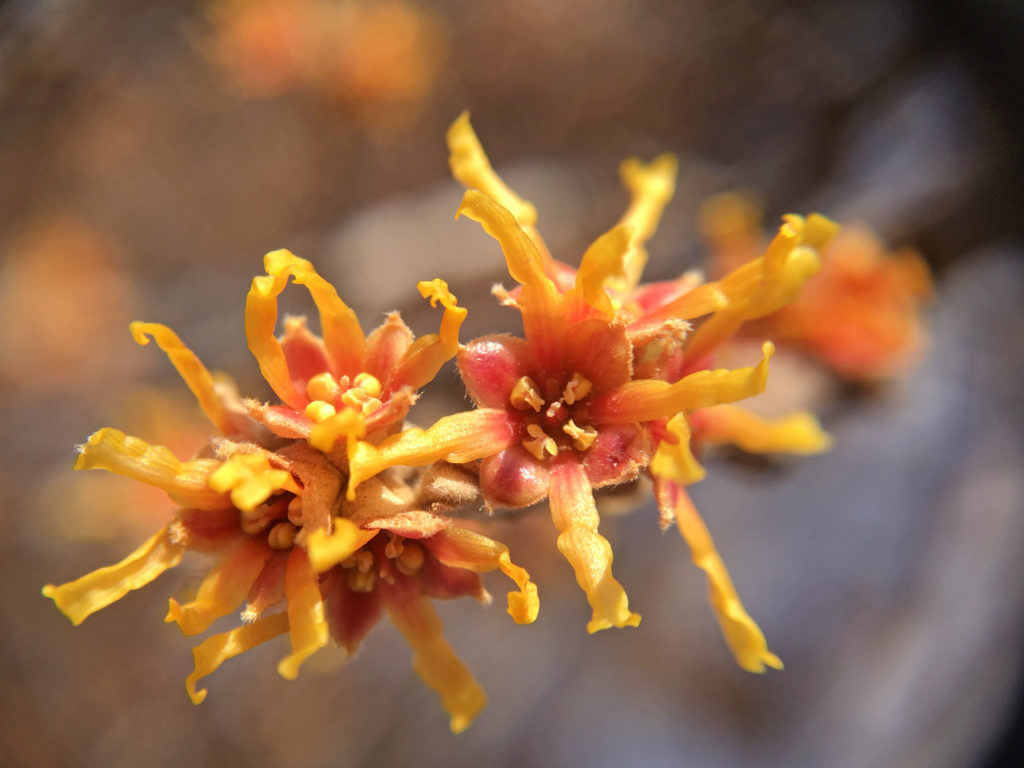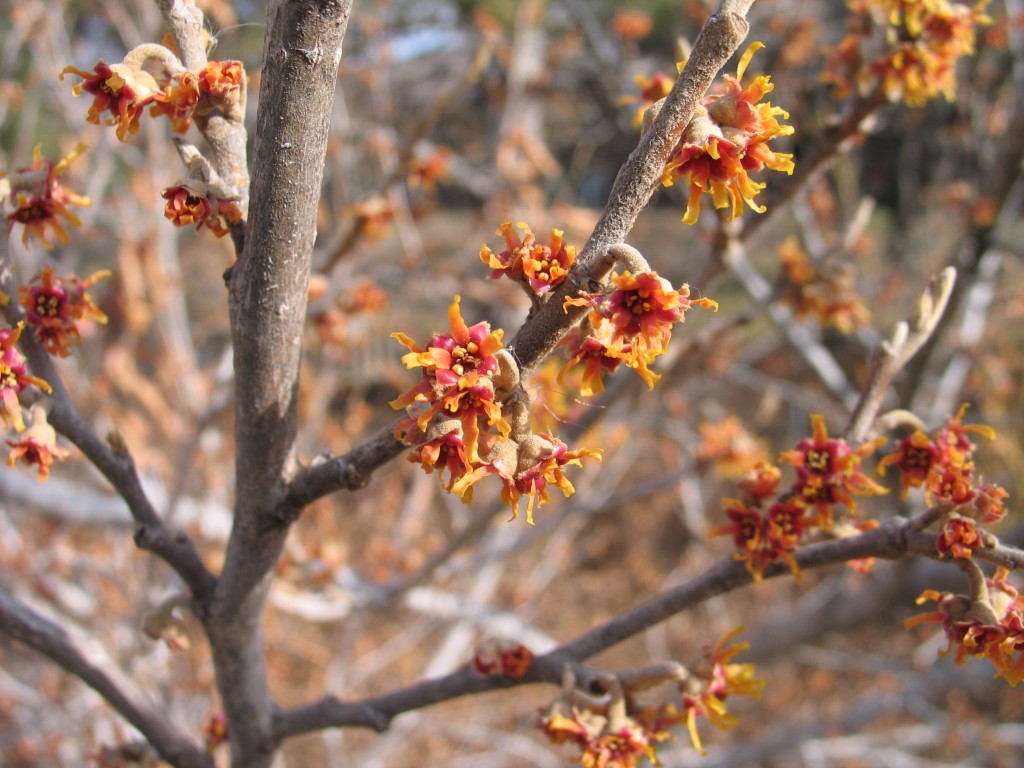This time of year we are looking for any hint of spring. Often we can find tips of green from bulbs or swelling buds of the silver maple. On other trees, such as birch, hazelhut, alder and later willows, you can see catkins dangling from their branches. One of the first harbingers of spring here at the Arboretum is the Ozark witchhazel.
Flowers
Ozark witchhazel, with the scientific name Hamamelis vernalis and pronounced ham-ah-MAY-lis ver-NAH-lis, is a native shrub found in Missouri and Arkansas spreading down through Oklahoma and Texas. In January to early March, depending on the winter, tiny yellow to reddish-purple flowers pop open along the stems. The flower petals resemble twisted ribbons. These muted yellow flowers add winter interest to the garden since they open before the leaves emerge. Our shrubs are just now starting to open.
Leaves & Habit
The wavy, oblong leaves expand in the spring to make a nice screen or hedge. Each leaf is a medium green with a whitish waxy coating. These leaves turn a nice yellow in the fall.
These shrubs can get large (up to 10’-12’ tall) over time especially in consistently moist soils. Our specimens are planted in clay, but there is good drainage away from the crowns. For the most part, they are drought tolerant, but appreciate a little extra water during drier periods. Leaf scorch occurs in hot, dry summers without adequate moisture.
For best flowering, plant these shrubs in full sun but they do tolerate some afternoon shade. There are no serious pests at this time.

Typically, it is a multi-stemmed shrub with straight upright habit. As the plant matures, the branches will arch and become broader. If it is really happy, it will develop root suckers. In our experience, these suckers have never been problematic or aggressive. Pruning will restrain colonization and spread. The best time to prune this shrub is in spring after it finishes blooming because next year’s blooms are set on this year’s new growth.
If you have the space, this large shrub can be a nice addition to your garden. The delicate flowers when nothing else is blooming is reason enough to try this plant. The vase-shaped habit with along the attractive oval-shaped leaves that turn a golden yellow in the fall are added bonuses. Why not give one or two a try? I am always amazed each time it blooms.


